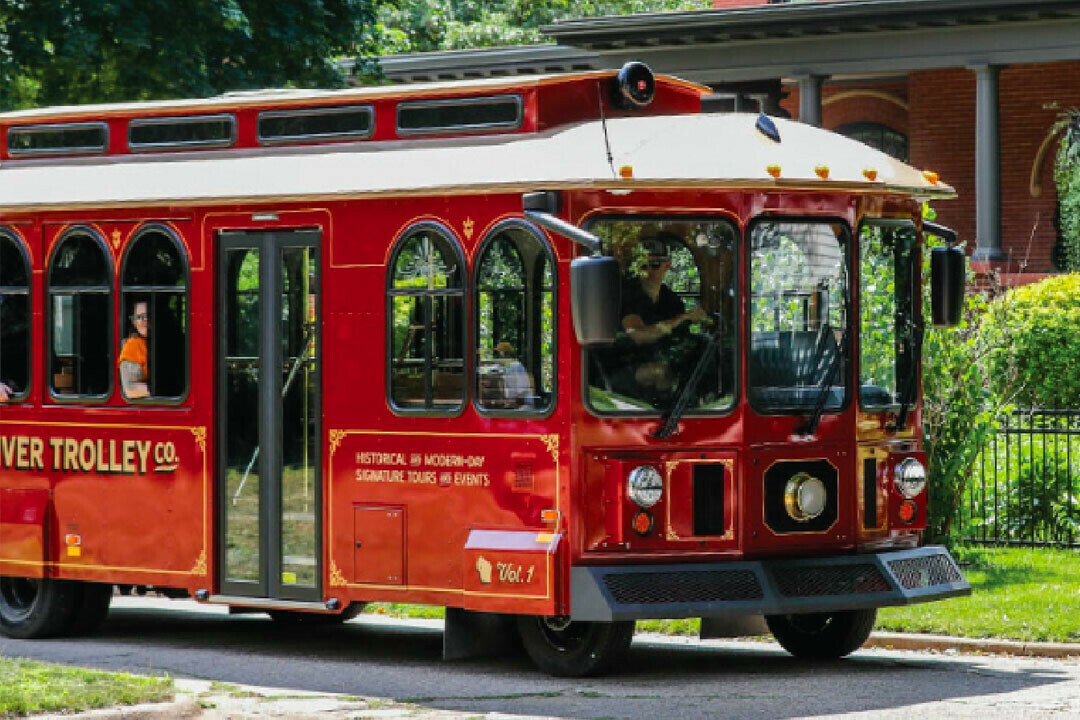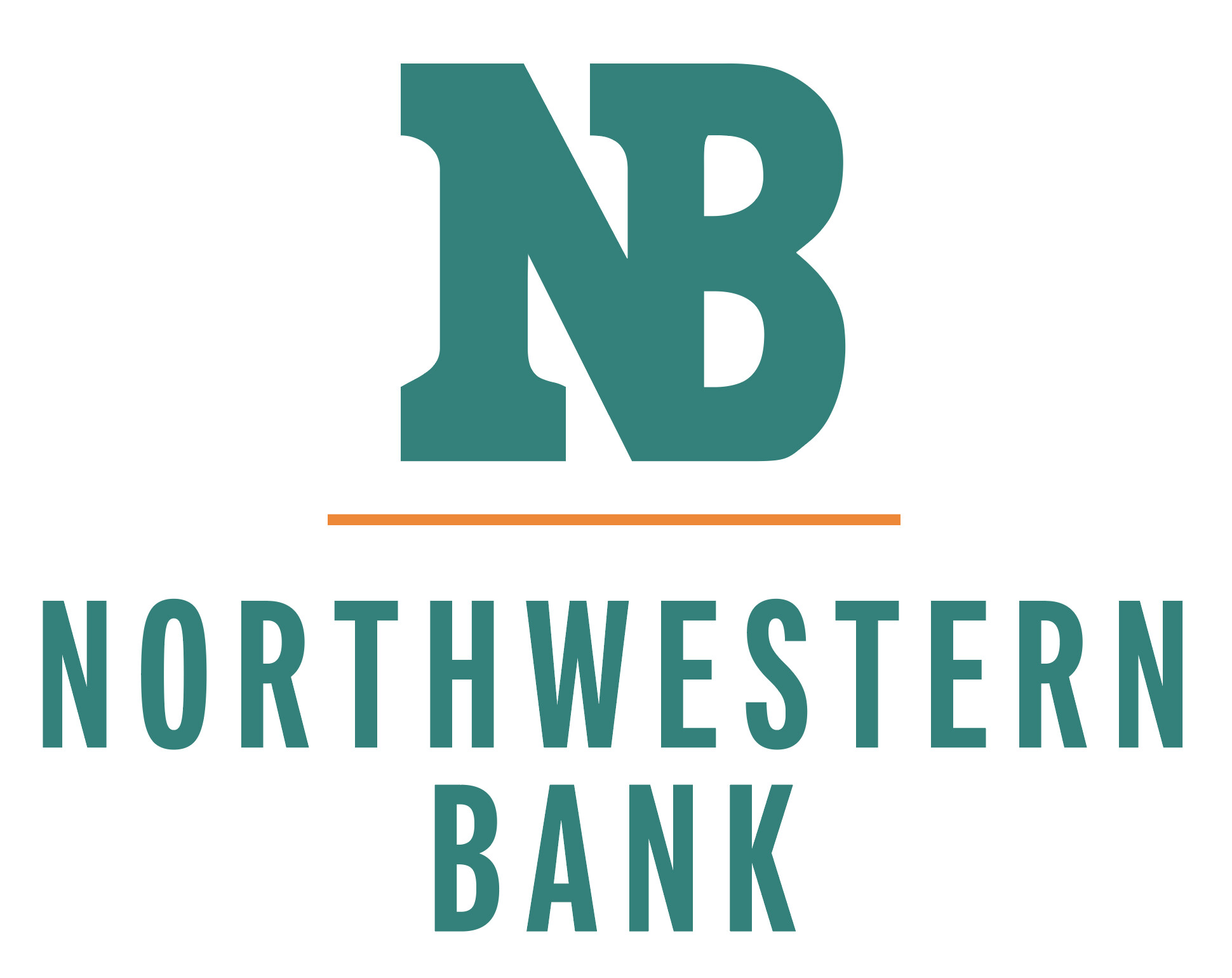Strolling Through History in Downtown Chippewa Falls
notable spots to see in the Bridge Street Commercial Historic District
Jarrod Showalter / Chippewa Area History Center |
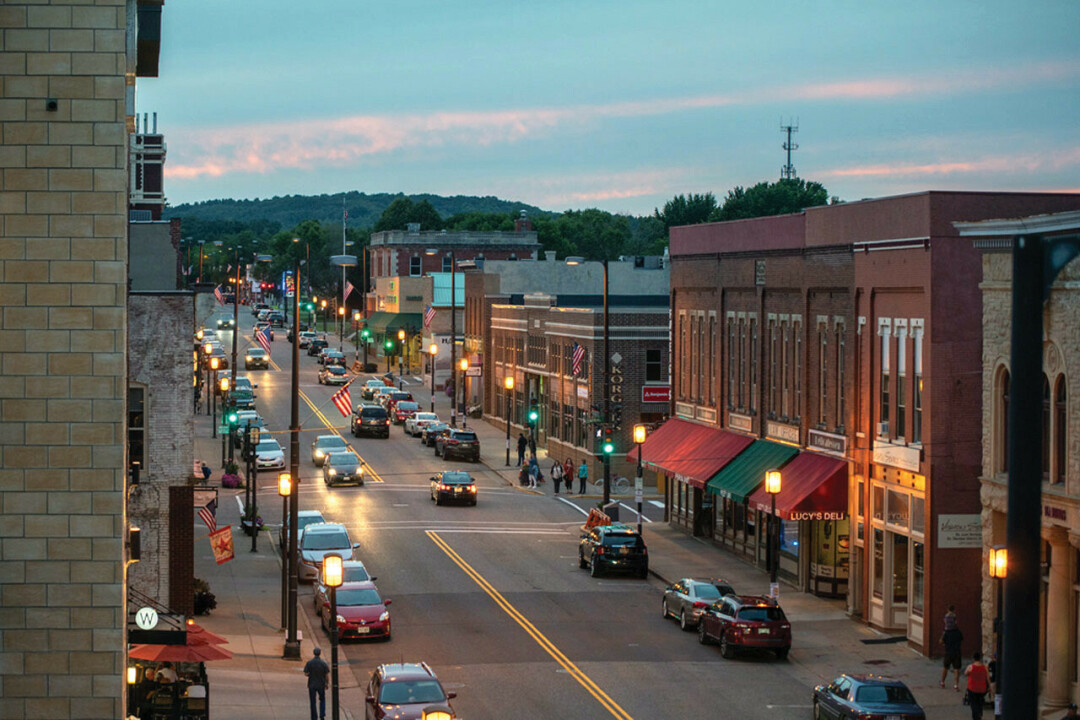
Many Wisconsin communities have a historic building or two. In Chippewa Falls, there are dozens – so many, in fact, that there are two designated historic districts in the city. One of them, the Bridge Street Commercial Historic District, includes 33 “contributing properties,” and was placed on the National Register of Historic Places in 1994.
Much of the Bridge Street Commercial Historic District was built during a boom from the late 1800s to early 1900s, when Chippewa Falls went from logging village to commercial city. Most of these buildings are mixed use, with the first floor for retail/commercial use and the upper levels for office space, or public and private social activities.
If you’re taking a stroll in downtown Chippewa Falls, here are some spots to check out, as compiled by Jarrod Showalter of the Chippewa Area History Center.
Metropolitan Block
101-105 N. Bridge St.
If you travel northwest on North Bridge Street after it intersects with Spring Street, the first building you will see on the right is the Metropolitan Block, designed by Samuel Snyder and built in 1889. The elaborate metal cornice at the top of the building, along with the stained glass transom windows, are representative of the Italianate style of architecture. The first floor was a popular retail location, especially for mercantile and dry goods. The third floor was used as a meeting space for secret societies, including the Knights of Pythias and the Women’s Ku Klux Klan, active throughout the 1920s and into the 1930s.
The adjacent building (107 N. Bridge St.), which was built in 1889, was once home to the Skogmo Cafe, which in 1960 hosted Massachusetts U.S. Sen. John F. Kennedy and his wife, Jackie, during his successful campaign in Wisconsin’s presidential primary.
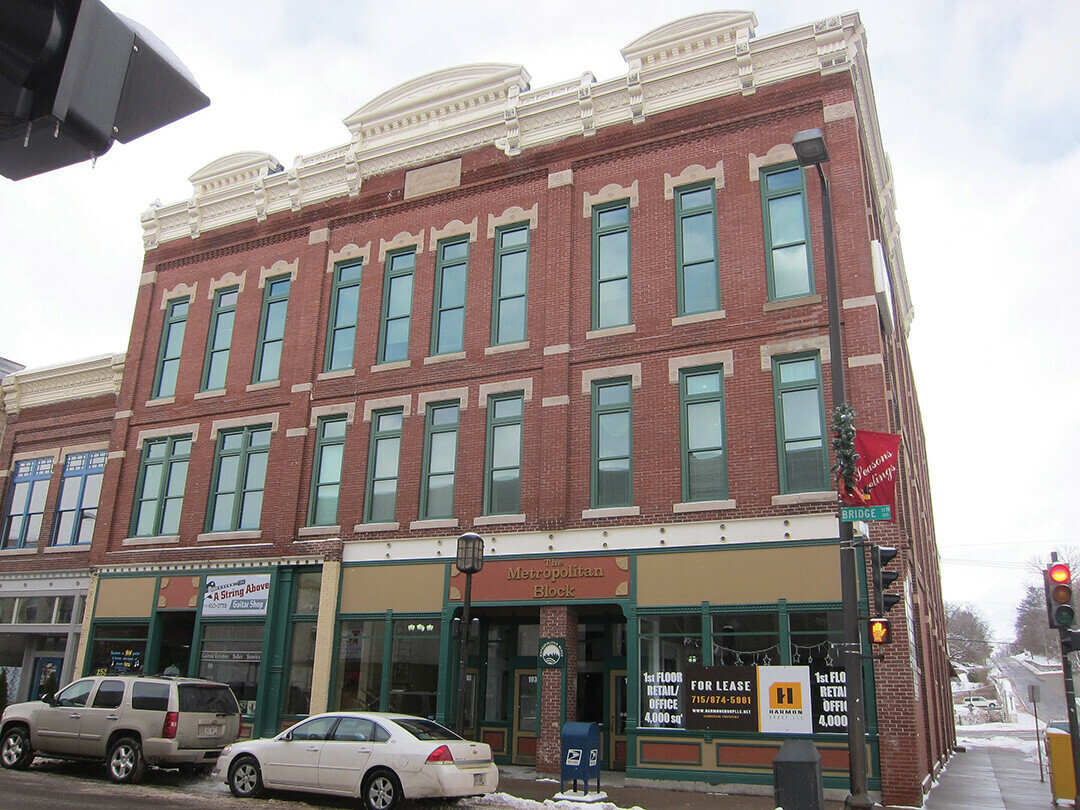
First National Bank
111 N. Bridge St.
The next building, built in 1883, was originally home to the First National Bank and now houses Eric’s Diamonds. It was built in the Romanesque Revival style, with its colonnade of stone columns and facade in random coursed sandstone. Virtually every prominent lumberman or early settler of Chippewa Falls was an officer or stockholder by the time First National Bank merged with Lumbermen’s National Bank in 1940. This is the only business in Wisconsin to have won both the Wisconsin State Main Street Award for Best Interior Restoration and the award for the best Exterior Restoration.
Hotel Northern
6 W. Grand Ave.
Continue two blocks, and on the left, at the intersection of West Grand Avenue, you’ll find the former Hotel Northern. Built in 1919 in the neoclassical style and extensively restored in 2008, the first floor housed retail shops, a Western Union, and a drugstore. The second and third floor contained hotel rooms, and on the fifth floor was the Elks Club. This building is often recalled in Chippewa Falls history as the hotel which was raffled off in a nation-wide lottery in 1921. The lottery was declared illegal by the state in 1922.
The BPOE (Benevolent and Protective Order of Elks) markings are still visible on the white glazed terra cotta ornament at the top of the building. In 1921, the building was scaled by a “Human Fly,” a climbing expert named Jeff Williams, who traveled the nation to scale skyscrapers.
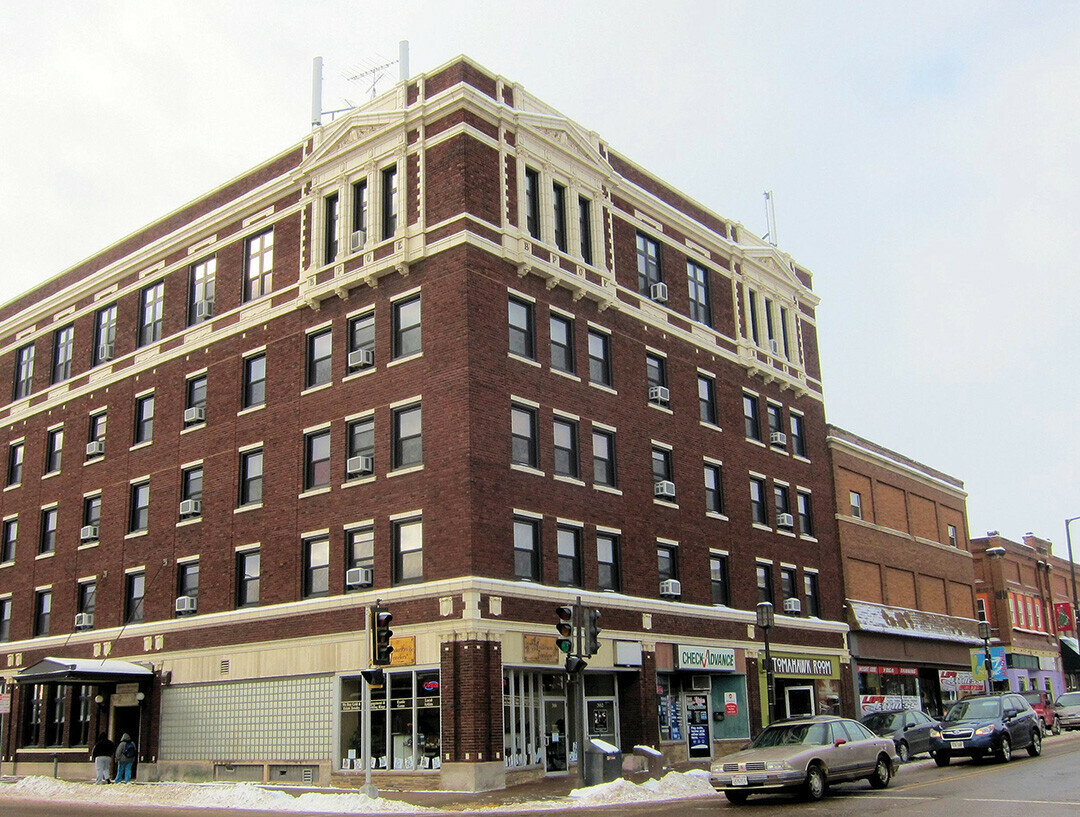
U.S. Post Office and Federal Building
315 N. Bridge St.
Ahead on the right we have the U.S. Post Office and Federal Building, built in 1910. Regular mail service was established at the “Falls” in 1851, nearly two decades before the city was officially incorporated. This structure is a typical example of early 1900s neoclassical style. While the interior has undergone alteration, it still maintains its beautiful rose, white, and gray marble floors and wainscoting. It is the only architecturally significant historic government building remaining in Chippewa Falls. By the 1920s, the federal building served nine rural routes, distributed mail along eight city routes, and employed 32 people.
Rutledge Charity Building
404 N. Bridge St.
Traveling one block farther, on the left you’ll see the Rutledge Charity Building, built in 1916. It is a fine example of neoclassical architecture. It housed the various charities of Edward Rutledge, a lumberman who was notable for his local benevolence. In 1911, following his death, the Rutledge estate established a one million dollar trust to support the welfare needs of Chippewa Falls. In addition to the Rutledge Charities, this building housed the local Woman’s Club, the Family Service of Chippewa Falls, the Children’s Aid Society of Wisconsin, and the Children’s Home Society. Even today, you’ll find Santa and Mrs. Claus here around Christmastime!
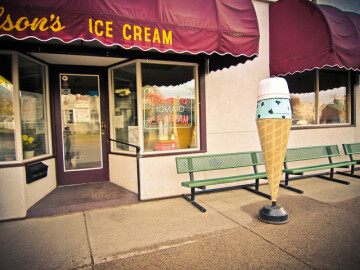
Olson’s Ice Cream
611 N. Bridge St.
A.J. Olson began making homemade ice cream in Knapp, Wisconsin, in 1923. He moved his business to Chippewa Falls in 1944, adding a door-to-door milk route, which also included butter, cottage cheese, and, of course, ice cream. Olson’s has since become a local landmark, satisfying ice cream lovers from all over the world.
Sokup’s Market
624 N. Bridge St.
Just down the block and across the street is Sokup’s Market, which has operated continuously at this location since 1894. Now in the hands of the fourth generation of Sokups, the market remains a full-service grocery best known for its cheeses and meat department (which features extra-lean ground beef, choice steaks, and homemade sausages). The “new” exterior was designed to more closely resemble the original facade. This location has been known as “Sokup’s Corner” for more than 115 years.
Jarrod Showalter is an educator at the Chippewa Area History Center, 12 Bridgwater Ave., Chippewa Falls.
Trolley Turns North
Chippewa Falls tour will be added to trolley company lineup
The Chippewa River Trolley Co. will follow the river north later this year with the launch of a Signature Chippewa Falls Trolley Tour. While details and dates are still to be determined, travelers can expect the tour to encompass sights and stories of historic and modern-day Chippewa Falls, from its original inhabitants to 18th century fur traders, 19th century lumber barons, and 20th century entrepreneurs.
From the beautifully historic downtown and its rushing river waters to the nooks and crannies of Irvine Park, the tour will leave no stone unturned as it guides passengers through tales of the people and places woven into the fabric of local life. Not only will they see creeks and caves, breweries and bridges, and dams and lakes, but they’ll learn of their stories, their significance, and their impact on this bustling and industrious small city.
The trolley is operated by the same folks who created Volume One and The Local Store, and shares their focus on celebrating the culture and creativity of the Chippewa Valley. It will be presented with the help of those who know the stories of Chippewa Falls best: the Chippewa Area History Center.
Keep an eye on chippewarivertrolley.org to learn more details as they are available.
